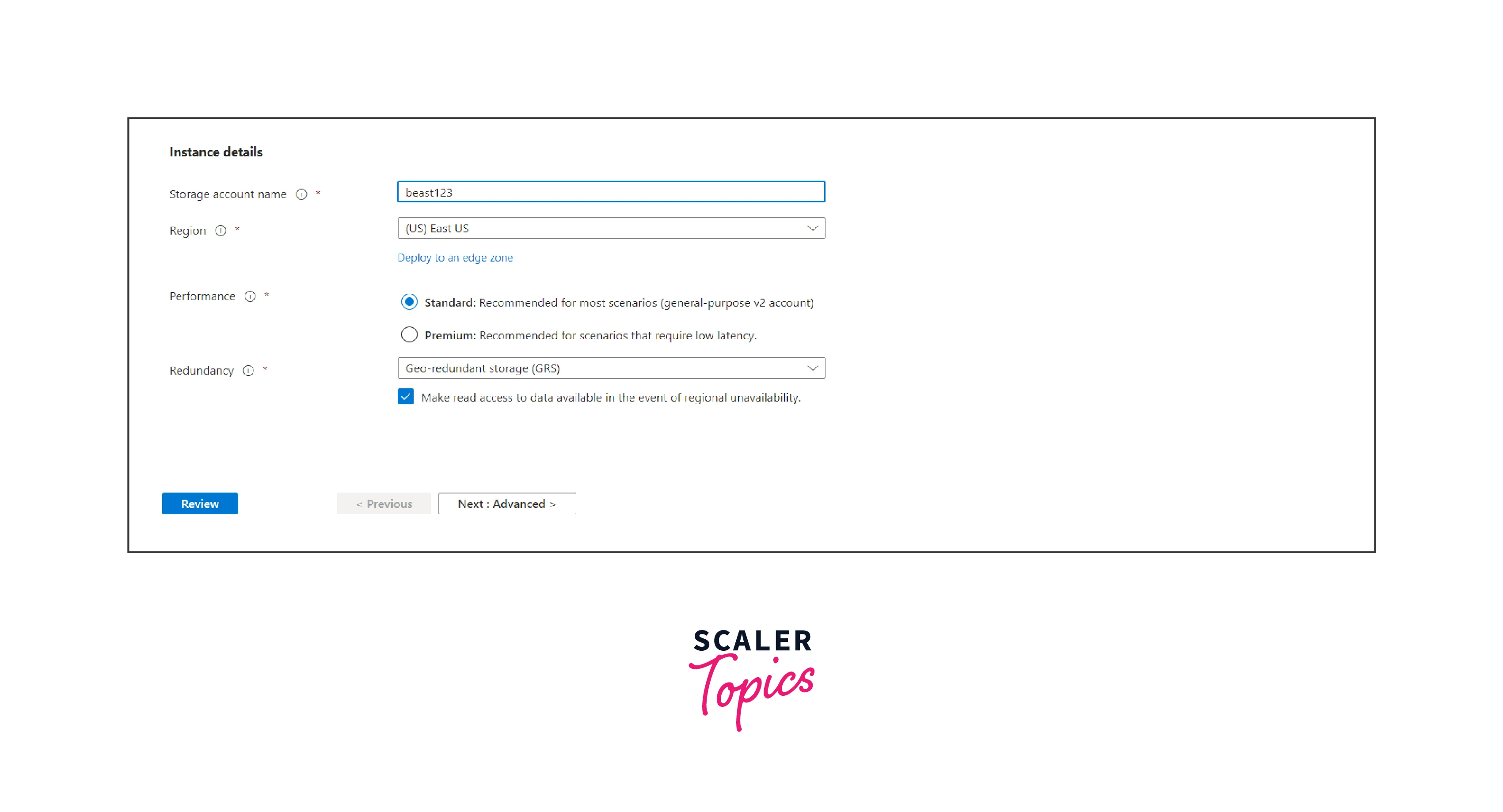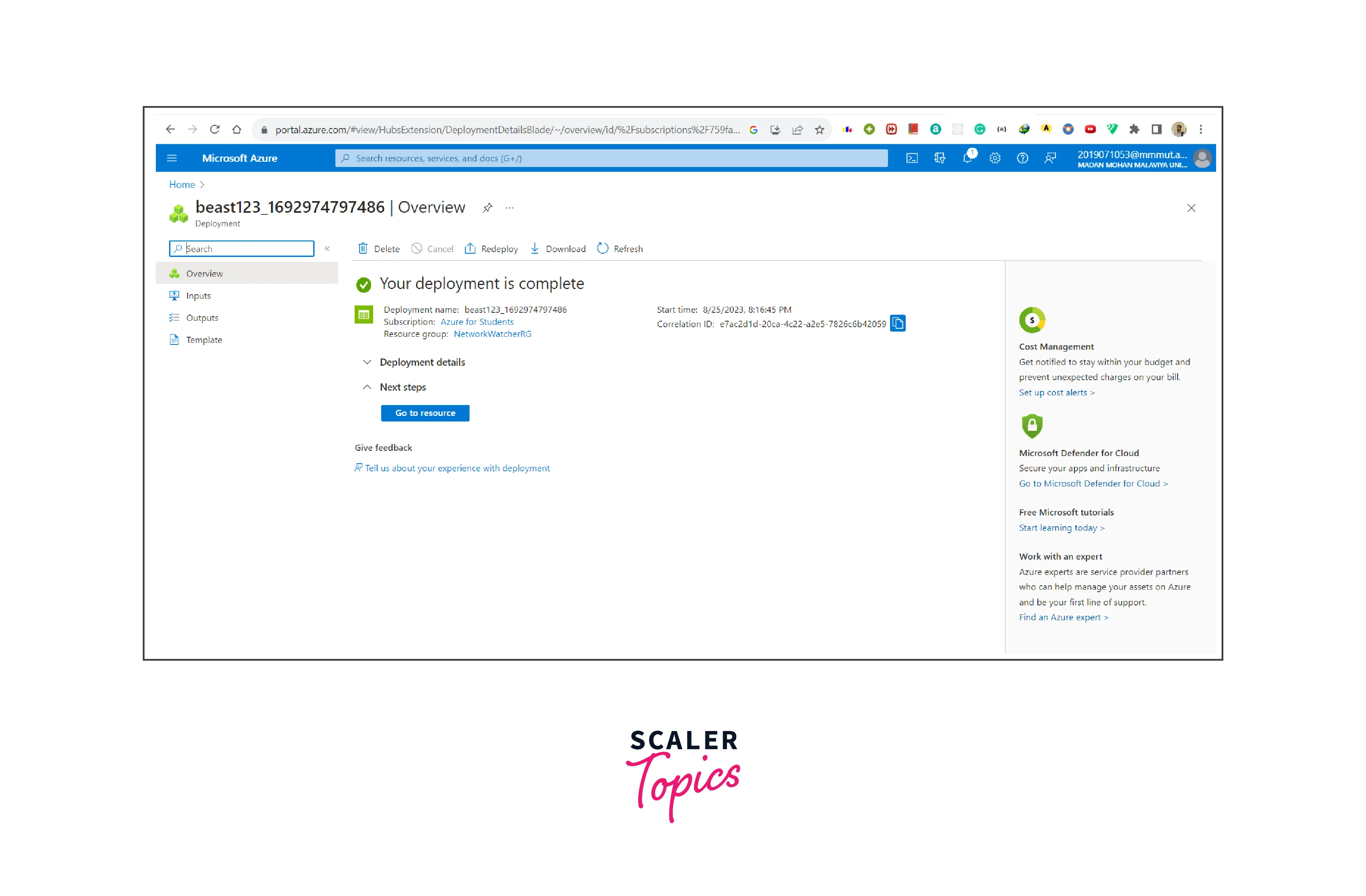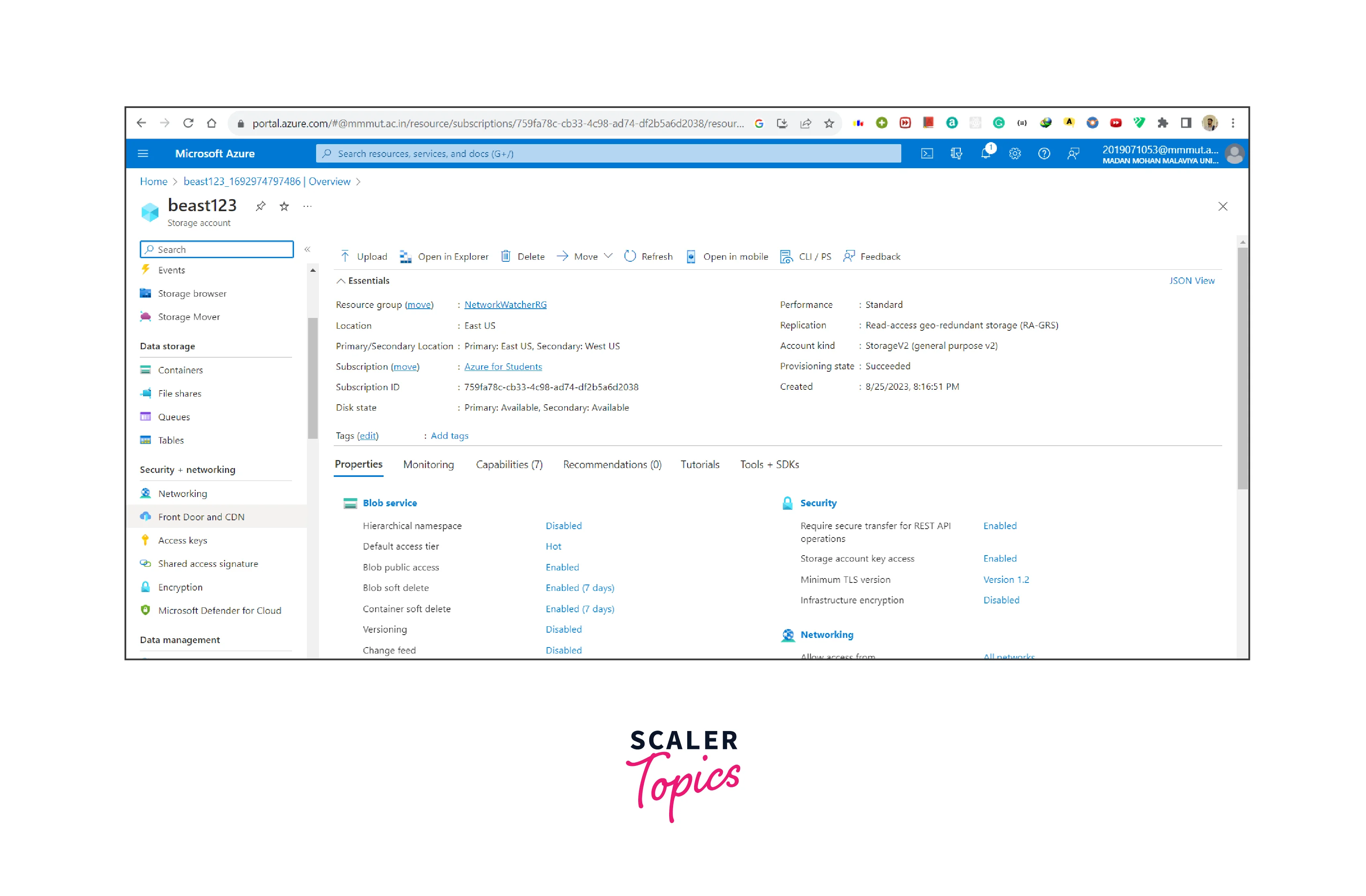What is Azure CDN (Content Delivery Network)?
Overview
In the modern and rapidly evolving digital world, online businesses and organizations must ensure fast and effective content distribution to users. To meet this demand, Microsoft Azure provides Azure CDN (Content Delivery Network), a solution designed to improve the speed with which data-heavy content is delivered to a global audience. This is achieved by utilizing a network of strategically positioned servers.
What is Azure Content Delivery Network (Azure CDN)
A content delivery network (CDN) can be seen as a widely dispersed collection of servers responsible for delivering web content to users. In Azure CDN, cached content is held on edge servers in point-of-presence (POP) locations strategically positioned near end users to reduce latency. This approach offers developers a means to furnish users with data-rich content by caching it at strategically located physical nodes around the world.

How is Azure Content Delivery Used?
The Microsoft Azure Content Delivery Network provides developers with a worldwide strategy to distribute data-rich content, achieved through caching this content across various locations. The caching functionality offered by Azure contributes to:
- Enhanced performance and an improved user experience are achieved for users located far from the content source.
- Scalability is a key feature, allowing seamless management of sudden spikes in demand and high traffic loads.
- Caching data from publicly accessible Azure storage blobs, CDN web content, pictures, scripts, and other website content.
- The CDN facilitates the caching of objects from an Azure cloud service. Selective caching of content based on specific query strings is supported.
- Accessing cached content via a custom domain name is enabled by mapping it to the CDN's HTTP Endpoint.
Azure CDN Features
Let's look at the various features offered by Azure CDN.
-
Automate processes and workflows:
Azure APIs and developer tools provide the performance, reliability, and security required to construct and automate global applications quickly.
-
Global coverage with high scalability:
Scale on the go with minimal downtime due to a platform that reacts to traffic changes.
-
Fast content delivery:
Content is distributed from geographically separated servers, lowering latency and improving load times globally.
-
Availability and reliable uptime:
This significantly decreases load times while maintaining high security. The global availability of Azure CDN is essential since it is available globally with exceptional uptime consistency.
-
Resource Optimization:
Optimizes content distribution and reduces the load on origin servers to improve performance.
-
Robust security:
It is feasible to prevent content delivery network security threats within Azure CDN, such as distributed denial-of-service attacks.
-
Advanced analytics:
By seeing how users interact with the content, you can learn more about their workflows and organizational needs. You can also learn how customers receive and cache assets.
What to Monitor in Azure CDN for Performance?
Some of the significant metrics and data to look for while measuring CDN performance are as follows:
Connect Time
Ensure that the CDN maintains optimal network connectivity, minimizing latency and packet loss even during times of high traffic.
Wait Time
Evaluate the duration taken to transmit content from the CDN to the requesting node. The lower the waiting time, the higher will be the performance.
Throughput
Make sure the CDN's total data transfer rate surpasses that of the source server for effective content delivery.
Caching
Track the combined Cache Hits and Misses for effective cache management and content delivery optimization.
Create Azure CDN
Let's see the various steps to create an Azure CDN:
Creating a Storage Account
To create a storage account in Azure, follow the following steps:
-
Click on the search bar, type Storage Accounts and click on the Storage Accounts option in the search.

-
The following interface will open on the screen. Now, click on Create.

-
Now, enter the required details to create a storage account.
-
Select your preferred subscription type. Specify the name of the existing resource group, or you can create a new one for this purpose.

-
Ensure that the name you choose for the storage account is unique, as it serves as an identifier for the newly established storage account.

-
The remaining settings can be left at their default values, after which you can click the Review and then on Create button.
-
The creation of a storage account takes some time. After the account is created, simply click on Go to resource button.

Enabling Azure CDN for the Storage Account
-
Click on Front Door and CDN under Security + Networking in the left-hand menu.

-
Choose Create New and give the CDN profile a name.
-
Then, decide on a pricing strategy. After that, give the endpoint a unique name.

-
To deploy the CDN, click Create. The newly created endpoint appears like this.

Why Use Azure CDN?
Most of the stuff we see on the internet, like pictures and videos, stays mostly the same. Delivering such content directly from the origin server can increase the network overhead on the server. To tackle this, caching content in distributed points of presence (POPs) worldwide offloads the origin server and minimizes infrastructure expenses.
Azure CDN offers faster content delivery by storing copies of web content in servers worldwide, reducing load on the main server, enhancing user experience, and handling traffic spikes. With global reach, efficient caching, and security features, it improves site performance, security, and scalability. Integration with Azure services and cost-effectiveness further make it a valuable choice for optimizing content delivery and enhancing user satisfaction.
Advantages of Azure CDN
-
Enhanced Performance:
Azure CDN accelerates content delivery by utilizing a network of global servers. This reduces latency and ensures faster user loading times, enhancing the overall user experience.
-
Security:
The CDN can help mitigate security concerns such as DoS assaults by distributing and absorbing traffic across multiple points of presence.
-
Scalability:
The CDN effortlessly manages traffic surges, ideal for events like product launches, without needing extra infrastructure.
-
Easy Integration:
Azure CDN works seamlessly with other Azure services and tools, making setup and management more effortless. It's beneficial for companies that currently use Azure infrastructure.
Disadvantages of Azure CDN
-
Cost:
While Azure CDN might be cost-effective, the costs can rise if data transmission or requests exceed the assigned limits.
-
Origin Server Dependency:
Azure CDN may not perform efficiently if the origin server experiences downtime or other difficulties.
-
Latency Variation:
Depending on user location and server availability, latency might vary, impacting load times for certain users.
-
Network Issues:
While CDN services aim to improve content delivery by distributing it across multiple servers, there can still be network-related issues that impact the delivery speed and reliability, such as network outages or congestion.
-
Initial Setup Time:
Getting Azure CDN up and running might take some time, especially if you're new to the Azure ecosystem. This setup time could delay the deployment of your content delivery infrastructure.
Azure CDN Pricing
In India, Azure CDN options include Standard Microsoft, Standard Verizon, and Standard Akamai for content delivery with diverse performance and features. The table given below shows the pricing of CDN services in various zones.
| Serial No. | Outbound Data Transfers (per month basis) | Zone 1 | Zone 2 | Zone 3 | Zone 4 | Zone 5 |
|---|---|---|---|---|---|---|
| 1. | First 10 TB | KaTeX parse error: Expected 'EOF', got '₹' at position 1: ₹̲5.8357/GB | KaTeX parse error: Expected 'EOF', got '₹' at position 1: ₹̲9.2939/GB | KaTeX parse error: Expected 'EOF', got '₹' at position 1: ₹̲16.7866/GB | KaTeX parse error: Expected 'EOF', got '₹' at position 1: ₹̲9.3659/GB | KaTeX parse error: Expected 'EOF', got '₹' at position 1: ₹̲11.3832/GB |
| 2. | Next 40 TB | KaTeX parse error: Expected 'EOF', got '₹' at position 1: ₹̲5.4034/GB | KaTeX parse error: Expected 'EOF', got '₹' at position 1: ₹̲8.7175/GB | KaTeX parse error: Expected 'EOF', got '₹' at position 1: ₹̲13.4005/GB | KaTeX parse error: Expected 'EOF', got '₹' at position 1: ₹̲9.0778/GB | KaTeX parse error: Expected 'EOF', got '₹' at position 1: ₹̲8.7175/GB |
| 3. | Next 100TB/GB | KaTeX parse error: Expected 'EOF', got '₹' at position 1: ₹̲4.0346/GB | KaTeX parse error: Expected 'EOF', got '₹' at position 1: ₹̲8.0691/GB | KaTeX parse error: Expected 'EOF', got '₹' at position 1: ₹̲12.1037/GB | KaTeX parse error: Expected 'EOF', got '₹' at position 1: ₹̲8.0691/GB | KaTeX parse error: Expected 'EOF', got '₹' at position 1: ₹̲7.3487/GB |
| 4. | Next 350 TB | KaTeX parse error: Expected 'EOF', got '₹' at position 1: ₹̲2.6657/GB | KaTeX parse error: Expected 'EOF', got '₹' at position 1: ₹̲6.7003/GB | KaTeX parse error: Expected 'EOF', got '₹' at position 1: ₹̲10.7348/GB | KaTeX parse error: Expected 'EOF', got '₹' at position 1: ₹̲6.7003/GB | KaTeX parse error: Expected 'EOF', got '₹' at position 1: ₹̲6.7003/GB |
Conclusion
- A content delivery network (CDN) can be seen as a widely dispersed collection of servers responsible for delivering web content to users.
- Organizations can improve the performance of their websites and applications by caching frequently requested information closer to end users, reducing latency and improving content availability.
- Caching content in distributed points of presence (POPs) worldwide offloads the origin server and minimizes infrastructure expenses.
- Azure CDN enhances web performance, scales seamlessly, and reduces origin server load.
